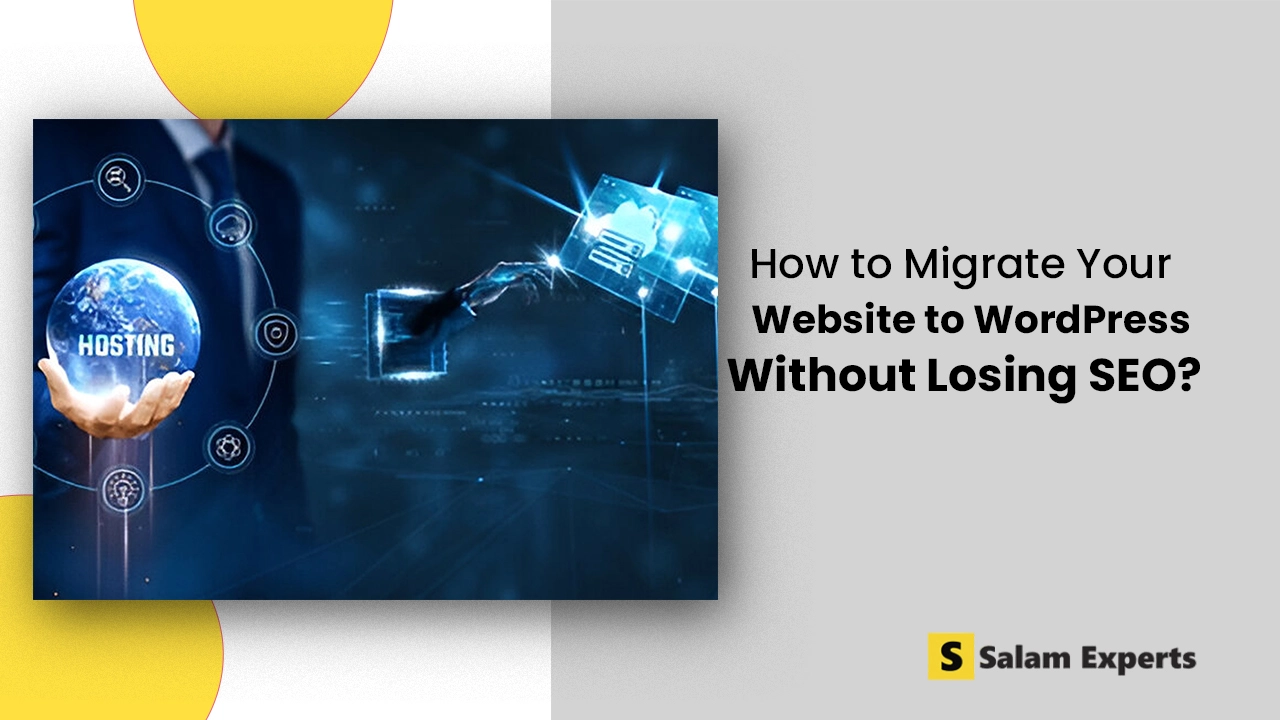🌍 How to Migrate Your Website to WordPress Without Losing SEO

Migrating your website to WordPress can be a great decision for your business, but one of the biggest concerns during the migration process is losing SEO rankings. Thankfully, with careful planning and execution, you can ensure that your SEO efforts are not lost in the process. In this post, we’ll guide you through the steps to migrate your website to WordPress without harming your SEO.
🚀 Why Migrate to WordPress?
WordPress is one of the most popular content management systems (CMS) in the world. It offers flexibility, ease of use, scalability, and an enormous range of plugins to enhance your site’s performance. Migrating your website to WordPress allows you to:
- Improve design and user experience with customizable themes and layouts.
- Access advanced AI SEO tools with plugins like Yoast SEO, All in One SEO, and more.
- Streamline content management with the simple and intuitive WordPress interface.
- Enhance site speed with the help of caching plugins and performance optimization tools.
However, as beneficial as it is, you need to carefully plan your migration to ensure your SEO rankings stay intact.
🚀 Key Steps to Migrate to WordPress Without Losing SEO
Step 1: Backup Your Existing Website
Before making any changes, back up your existing website. This ensures that you have a complete copy of your site in case anything goes wrong during the migration. You can use backup tools like UpdraftPlus or BackupBuddy to create a backup.
Step 2: Choose a Reliable Hosting Provider
Choosing the right hosting provider is critical for your SEO success. Make sure your new hosting provider supports WordPress and offers fast load times, security features, and high uptime.
If your old hosting provider doesn’t provide good WordPress performance, consider switching to a more optimized WordPress hosting provider like SiteGround, WP Engine, or Bluehost. Fast page load times are essential for SEO, so don’t compromise on hosting quality.
Step 3: Set Up WordPress on the New Server
Once you’ve chosen your new hosting provider, install WordPress. Most WordPress hosting providers offer a one-click installation feature, which makes this process simple. Alternatively, you can install WordPress manually by downloading the latest version from WordPress.org and following the installation instructions.
Step 4: Choose a Similar Theme and Plugin Setup
When setting up WordPress, try to replicate the look by choosing seo friendly themes and the feel of your old website. After choosing, optimize a WordPress theme to ensure it is SEO-friendly, mobile-responsive, and lightweight.WordPress offers thousands of themes, but make sure to select one that is well-optimized for speed and usability.
In addition, install plugins that will help you maintain your SEO efforts:
- Yoast SEO: A comprehensive plugin for managing your on-page SEO, including meta titles, descriptions, and more.
- Redirection: A useful plugin to set up 301 redirects (which we’ll discuss in the next step).
- WP Rocket: A caching plugin to improve site speed.
- Smush: An image compression plugin to reduce image size and improve load time.
Step 5: Set Up 301 Redirects
One of the most important steps in preserving your SEO during a migration is setting up 301 redirects. A 301 redirect is a permanent redirect from the old URL to the new one. This tells search engines that the content has moved permanently, and the SEO value from the old pages should be transferred to the new ones.
For example, if your old site had a URL like:
arduino
CopyEdit
http://www.oldsite.com/contact-us
Your new WordPress URL might be:
arduino
CopyEdit
http://www.newsite.com/contact-us
To ensure that your SEO is not lost, set up a 301 redirect from the old URL to the new URL. This can be done through your .htaccess file or using a plugin like Redirection.
Tip: Keep a list of all your old URLs and their new equivalents to ensure that all pages are properly redirected.
Step 6: Migrate Content to WordPress
There are different methods to migrate content, depending on the complexity of your website. If you’re migrating from a simple HTML site or another CMS, you may need to manually copy and paste your content into the new WordPress site.
If you’re moving from another WordPress website, you can use the WordPress Export/Import tools:
- Export content from the old site: Go to Tools > Export and select all content or specific content (pages, posts, comments, etc.).
- Import the content into the new site: Go to Tools > Import and choose the appropriate import tool.
Step 7: Ensure Internal Linking Is Correct
As part of the migration process, you need to ensure that all your internal links are pointing to the right URLs on your new site. Internal links are important for SEO because they help search engines discover and crawl all the pages on your site. To make internal linking perfect and natural, you can use AI for internal linking as it can intelligently suggest or insert relevant links based on your content context and keyword strategy. Use a plugin like Velvet Blues Update URLs to automatically update internal links after the migration.
Step 8: Test and Monitor Your Site
After completing the migration, it’s important to thoroughly test your new WordPress site. Check the following:
- Ensure that all URLs are redirecting correctly.
- Test for broken links using tools like Screaming Frog or Ahrefs.
- Check for missing images or missing content.
- Test site speed to ensure it loads quickly.
You should also use Google Search Console to monitor how Google views your new site. Make sure that it is properly indexed and free of crawl errors.
🚀 How to Preserve Your SEO During the Migration
- Use 301 redirects to maintain link equity and rankings.
- Keep track of your old URLs and map them to your new URLs.
- Optimize content for SEO on your new WordPress site using plugins like Yoast SEO.
- Maintain site speed and mobile optimization.
- Submit an updated sitemap to Google Search Console to ensure your new site is indexed quickly.
- Monitor SEO performance post-migration using tools like Google Analytics and Ahrefs.
🚀 Final Thoughts
Migrating your website to WordPress can significantly improve your site’s performance, design, and SEO. However, you must approach the migration process carefully to avoid SEO pitfalls. By following the steps outlined above, you can preserve your rankings, enhance your site’s functionality, and set the foundation for future SEO growth.
If you need help with the migration process or ensuring your SEO remains intact, feel free to reach out!






